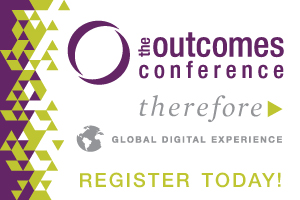
Compassionate Communicators By Dan Kennedy
 Compassionate Communicators Engage
Compassionate Communicators Engage
Becoming compassionate communicators is the number one thing you can do to increase engagement with your audiences — all of them. Compassionate communication works, but you have to work for it.
Let’s get practical: building an audience persona
Begin with the idea that marketing professionals are audience advocates. It’s our job to represent — sometimes to fight for — what our audience wants. We know this, but in the busyness of our work it is very hard to remember, and even harder to make decisions accordingly.
Rather than thinking in terms of an amorphous group called “the audience,” build an “audience persona,” a simple, single personal profile of your target audience (or, using softer language, those whom you desire to reach). This one extra step will make communication decisions simpler, more efficient and much more effective. Your persona can be as basic as a name with a simple label (think “Pastor Jerry”), or as elaborate as a fully fleshed out “bio board” with a picture, name, long-form description and more.
The more you know about your audience, the more accurately you can build your audience persona. Remember, this is single profile that captures the most important and most consistent aspects of your target audience. Ask yourself:
Demographics
- How old are they?
- What is their gender?
- Where do they live?
- Where do they work?
- What is their role?
- What do you know about their organization?
Psychographics
- What is important to them?
- What do they need?
- What are their challenges?
- What motivates them?
- What do they fear?
Perceptions
- What do they think about you?
- What do they say you do for them?
- What do they say you do well?
- Who else could they go to for something similar?
- What do they say you are terrible at?
- What do they say your organization’s name means?
- What do they say is your mission?
- What keeps them engaged with your organization?
A Name
Don’t skip this. Nothing is makes it more personal than giving this persona a name. Why? Because as marketers, we target an audience, but we talk to Bob and We share with Kim. We’re careful about what we send to Paul. Some organizations create a persona using a fictional name. The advantage is that you get to customize the profile to represent the kind of person you want to reach. The downside is that it lacks a level of humanness. The other approach is to use a real person who closely matches your target audience. The advantage, of course, is that it makes it truly personal. The downside is that particular person might not fit all the characteristics you deem important.
The process, like the final product, can be done simply or on a grand scale. This will be proportional to your challenges and resources. Here’s a basic framework for the process:
(1) Start with leadership alignment.
Bottom line: this tool only works if your leadership team is aligned to the prioritization of your target audience(s). Here’s why. While the people you directly serve might be the focus of your mission (we call this your ministry model), you also have to know who keeps the lights on (we call this your financial model). To use a corporate example, the focus of P&G’s product Pampers is babies, while P&G’s target audience is the mom who is doing the shopping. In Christian schools, while the mission is often focused on students, marketing starts with prospective parents (and usually the mom doing the research).
(2) Ask internally.
The people in your organization know a lot about your audience. This is true especially of those on the front lines answering the phone, hearing your praises and your shortcomings, reading comments on Facebook. Institutional knowledge is invaluable, but you can’t stop there.
(3) Seek qualitative input.
Be honest. When is the last time you intentionally sat down and asked the questions above to the people you want to reach? Do 30 minute interviews with 10 of them. Hold several focus groups with gatherings of six to eight people who match your criteria (and hold on as you listen to them talk to each other!). Write down the words they say (avoid summarizing what you heard them say; their exact words matter significantly). After the interviews, carefully find the themes. Capture this in your audience persona.
(4) Gather quantitative data.
What percentage of your total audience does this audience persona actually match? At Kumveka, we love using online survey tools. So does… everyone. Use them sparingly and keep them short. Done right, it sends the message that “we really want to know you.”
(5) What’s next?
Ready for the next level? Do it again. Who is next on your audience priority list? Make an audience persona for them. Every new audience persona you build allows you to think about delivering different messages using different channels to different audience segments based on their unique needs (segmentation). Yes, this will require a messaging matrix and a marketing calendar, but it’s all doable. Keeping your audience persona in mind is a critical practice for those seeking to be compassionate (and did I mention effective?) communicators.
What about you? Are you compassionate communicators? What makes this challenging? Where have you found success? Drop me a line, but be kind; I prefer bullet points.
####
Dan Kennedy is founder and executive director of Kumveka, a nonprofit branding and marketing agency serving Christ-focused ministries around the world. He lives in Richmond, Va., with his wife and four teenagers. This post is an excerpt from Dan’s article in the 2017 summer edition of Outcomes magazine.
Learn About CLA Membership and Join Today!

What is Christian Leadership Alliance?
Christian Leadership Alliance equips and unites leaders to transform the world for Christ. We are the leaders of Christ-centered organizations who are dedicated to faithful stewardship for greater kingdom impact.
Sign up for FREE blog updates.
Upcoming Events
Check back later!



